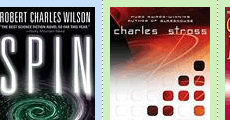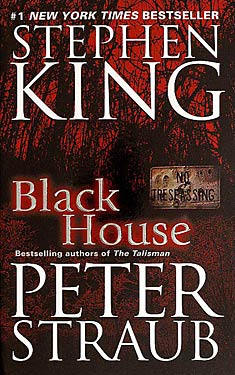
Added By: Administrator
Last Updated: Administrator
Black House
| Author: | Stephen King Peter Straub |
| Publisher: |
Random House, 2001 |
| Series: | Talisman: Book 2 |
|
1. The Talisman |
|
| Book Type: | Novel |
| Genre: | Horror |
| Sub-Genre Tags: | Demons Psychic Abilities Monsters |
| Awards: | |
| Lists: | |
| Links: |
|
| Avg Member Rating: |
|
|
|
|
Synopsis
Two of the greatest storytellers of our time join forces to create an epic thriller of unsurpassed power; a twisting, compelling story of a small American town held in the grip of evil beyond all reason.
French Landing, Wisconsin. A comfortable, solid middle-American town inhabited by comfortable, solid middle-Americans! and a serial killer. Three children have been lost -- taken by a monster with a taste for child's flesh nicknamed 'The Fisherman' after a legendary murderer. It's all way beyond the experience of the local police, whose only hope lies with ex-detective Jack Sawyer, the man who cracked their last case for them.
But, plagued by visions of another world, Jack has retired to this rural retreat precisely to avoid such horrors -- and, having recognized the touch of madness on this case, he's keeping well away. Soon, he'll have no choice. Young Tyler Marshall, left behind one afternoon by his bullying friends, pedals past the local old folks' home and is accosted by a crow. 'Gorg,' it caws, and 'Ty.' What ten-year-old could resist a bird that speaks his name? Not Ty, that's for sure. And as he follows the mysterious crow, he's grabbed by the neck and dragged into a hedge. The Fisherman has made another catch!
Excerpt
Part One: Welcome to Coulee Country
Right here and now, as an old friend used to say, we are in the fluid present, where clear-sightedness never guarantees perfect vision. Here: about two hundred feet, the height of a gliding eagle, above Wisconsin's far western edge, where the vagaries of the Mississippi River declare a natural border. Now: an early Friday morning in mid-July a few years into both a new century and a new millennium, their wayward courses so hidden that a blind man has a better chance of seeing what lies ahead than you or I. Right here and now, the hour is just past six a.m., and the sun stands low in the cloudless eastern sky, a fat, confident yellow-white ball advancing as ever for the first time toward the future and leaving in its wake the steadily accumulating past, which darkens as it recedes, making blind men of us all.
Below, the early sun touches the river's wide, soft ripples with molten highlights. Sunlight glints from the tracks of the Burlington Northern Santa Fe Railroad running between the riverbank and the backs of the shabby two-story houses along County Road Oo, known as Nailhouse Row, the lowest point of the comfortable-looking little town extending uphill and eastward beneath us. At this moment in the Coulee Country, life seems to be holding its breath. The motionless air around us carries such remarkable purity and sweetness that you might imagine a man could smell a radish pulled out of the ground a mile away.
Moving toward the sun, we glide away from the river and over the shining tracks, the backyards and roofs of Nailhouse Row, then a line of Harley-Davidson motorcycles tilted on their kickstands. These unprepossessing little houses were built, early in the century recently vanished, for the metal pourers, mold makers, and crate men employed by the Pederson Nail factory. On the grounds that working stiffs would be unlikely to complain about the flaws in their subsidized accommodations, they were constructed as cheaply as possible. (Pederson Nail, which had suffered multiple hemorrhages during the fifties, finally bled to death in 1963.) The waiting Harleys suggest that the factory hands have been replaced by a motorcycle gang. The uniformly ferocious appearance of the Harleys' owners, wild-haired, bushy-bearded, swag-bellied men sporting earrings, black leather jackets, and less than the full complement of teeth, would seem to support this assumption. Like most assumptions, this one embodies an uneasy half-truth.
The current residents of Nailhouse Row, whom suspicious locals dubbed the Thunder Five soon after they took over the houses along the river, cannot so easily be categorized. They have skilled jobs in the Kingsland Brewing Company, located just out of town to the south and one block east of the Mississippi. If we look to our right, we can see "the world's largest six-pack," storage tanks painted over with gigantic Kingsland Old-Time Lager labels. The men who live on Nailhouse Row met one another on the Urbana-Champaign campus of the University of Illinois, where all but one were undergraduates majoring in English or philosophy. (The exception was a resident in surgery at the UI-UC university hospital.) They get an ironic pleasure from being called the Thunder Five: the name strikes them as sweetly cartoonish. What they call themselves is "the Hegelian Scum." These gentlemen form an interesting crew, and we will make their acquaintance later on. For now, we have time only to note the hand-painted posters taped to the fronts of several houses, two lamp poles, and a couple of abandoned buildings. The posters say: fisherman, you better pray to your stinking god we don't catch you first! remember amy!
From Nailhouse Row, Chase Street runs steeply uphill between listing buildings with worn, unpainted facades the color of fog: the old Nelson Hotel, where a few impoverished residents lie sleeping, a blank-faced tavern, a tired shoe store displaying Red Wing workboots behind its filmy picture window, a few other dim buildings that bear no indication of their function and seem oddly dreamlike and vaporous. These structures have the air of failed resurrections, of having been rescued from the dark westward territory although they were still dead. In a way, that is precisely what happened to them. An ocher horizontal stripe, ten feet above the sidewalk on the facade of the Nelson Hotel and two feet from the rising ground on the opposed, ashen faces of the last two buildings, represents the high-water mark left behind by the flood of 1965, when the Mississippi rolled over its banks, drowned the railroad tracks and Nailhouse Row, and mounted nearly to the top of Chase Street.
Where Chase rises above the flood line and levels out, it widens and undergoes a transformation into the main street of French Landing, the town beneath us. The Agincourt Theater, the Taproom Bar & Grille, the First Farmer State Bank, the Samuel Stutz Photography Studio (which does a steady business in graduation photos, wedding pictures, and children's portraits) and shops, not the ghostly relics of shops, line its blunt sidewalks: Benton's Rexall drugstore, Reliable Hardware, Saturday Night Video, Regal Clothing, Schmitt's Allsorts Emporium, stores selling electronic equipment, magazines and greeting cards, toys, and athletic clothing featuring the logos of the Brewers, the Twins, the Packers, the Vikings, and the University of Wisconsin. After a few blocks, the name of the street changes to Lyall Road, and the buildings separate and shrink into one-story wooden structures fronted with signs advertising insurance offices and travel agencies; after that, the street becomes a highway that glides eastward past a 7-Eleven, the Reinhold T. Grauerhammer VFW Hall, a big farm-implement dealership known locally as Goltz's, and into a landscape of flat, unbroken fields. If we rise another hundred feet into the immaculate air and scan what lies beneath and ahead, we see kettle moraines, coulees, blunted hills furry with pines, loam-rich valleys invisible from ground level until you have come upon them, meandering rivers, miles-long patchwork fields, and little towns-one of them, Centralia, no more than a scattering of buildings around the intersection of two narrow highways, 35 and 93.
Directly below us, French Landing looks as though it had been evacuated in the middle of the night. No one moves along the sidewalks or bends to insert a key into one of the locks of the shop fronts along Chase Street. The angled spaces before the shops are empty of the cars and pickup trucks that will begin to appear, first by ones and twos, then in a mannerly little stream, an hour or two later. No lights burn behind the windows in the commercial buildings or the unpretentious houses lining the surrounding streets. A block north of Chase on Sumner Street, four matching red-brick buildings of two stories each house, in west-east order, the French Landing Public Library; the offices of Patrick J. Skarda, M.D., the local general practitioner, and Bell & Holland, a two-man law firm now run by Garland Bell and Julius Holland, the sons of its founders; the Heartfield & Son Funeral Home, now owned by a vast, funereal empire centered in St. Louis; and the French Landing Post Office.
Separated from these by a wide driveway into a good-sized parking lot at the rear, the building at the end of the block, where Sumner intersects with Third Street, is also of red brick and two stories high but longer than its immediate neighbors. Unpainted iron bars block the rear second-floor windows, and two of the four vehicles in the parking lot are patrol cars with light bars across their tops and the letters flpd on their sides. The presence of police cars and barred windows seems incongruous in this rural fastness-what sort of crime can happen here? Nothing serious, surely; surely nothing worse than a little shoplifting, drunken driving, and an occasional bar fight.
As if in testimony to the peacefulness and regularity of small-town life, a red van with the words la riviere herald on its side panels drifts slowly down Third Street, pausing at nearly all of the mailbox stands for its driver to insert copies of the day's newspaper, wrapped in a blue plastic bag, into gray metal cylinders bearing the same words. When the van turns onto Sumner, where the buildings have mail slots instead of boxes, the route man simply throws the wrapped papers at the front doors. Blue parcels thwack against the doors of the police station, the funeral home, and the office buildings. The post office does not get a paper.
What do you know, lights are burning behind the front downstairs windows of the police station. The door opens. A tall, dark-haired young man in a pale blue short-sleeved uniform shirt, a Sam Browne belt, and navy trousers steps outside. The wide belt and the gold badge on Bobby Dulac's chest gleam in the fresh sunlight, and everything he is wearing, including the 9mm pistol strapped to his hip, seems as newly made as Bobby Dulac himself. He watches the red van turn left onto Second Street, and frowns at the rolled newspaper. He nudges it with the tip of a black, highly polished shoe, bending over just far enough to suggest that he is trying to read the headlines through the plastic. Evidently this technique does not work all that well. Still frowning, Bobby tilts all the way over and picks up the newspaper with unexpected delicacy, the way a mother cat picks up a kitten in need of relocation. Holding it a little distance away from his body, he gives a quick glance up and down Sumner Street, about-faces smartly, and steps back into the station. We, who in our curiosity have been steadily descending toward the interesting spectacle presented by Officer Dulac, go inside behind him.
A gray corridor leads past a blank door and a bulletin board with very little on it to two sets of metal stairs, one going down to a small locker room, shower stalls, and a firing range, the other upward to an interrogation room and two facing rows of cells, none presently occupied. Somewhere near, a ...
Copyright © 2001 by Stephen King
Copyright © 2001 by Peter Straub
Reviews
There are currently no reviews for this novel. Be the first to submit one! You must be logged in to submit a review in the BookTrackr section above.
Images
No alternate cover images currently exist for this novel.














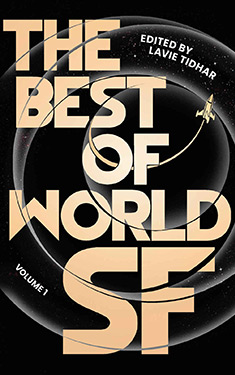
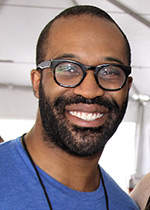
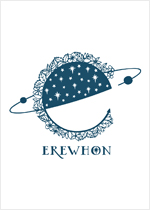


 Full Details
Full Details

